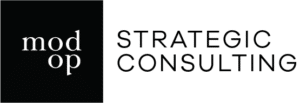What does it take to be a successful organization in today’s fast-moving environment?
Most of us would agree you need:
- An understanding of customer needs
- Deep knowledge about the markets in which you operate
- The agility to rapidly respond to change
- The capacity to quickly turn an idea into a product and get it to your customers
However, there are a number of misconceptions that enter the conversation – and can lead your team astray, costing you time, money, and opportunities.
Technology is the fuel
Ultimately, you need to be able to move ideas through the development pipeline, adjusting as the landscape shifts, to get products and services to market with as much velocity as possible.
We cannot overstate this enough: Time to market is critical to profitability.
Given those requirements, one of the first things to evaluate in a business is whether the technology in place is optimized to turn ideas into products. Then, once that question is answered, is that technology set up and optimized to put those products into the hands of customers.
To assess this, we ask things like:
- Are the systems facilitating a speedy, efficient development process?
- Or are the systems slowing down processes, creating inefficiencies, and ultimately leading to missed opportunities for revenue generation and market dominance?
For many companies, the latter scenario is all too familiar. And this is often due to misconceptions common among some executives, which, end up inhibiting their organizations from finding business success through sound strategic technology planning.
Faulty reasoning leads to missed opportunities
Below are three examples of faulty reasoning that can stop success in its tracks:
“We already have lots of technology systems in place, so we’re okay.”
It’s not as if businesses today come to us still recording information with pencil and paper, filing it away in card catalogs. Most mature organizations leverage an incredible array of technology solutions and infrastructure across their business.
But that, right there, is part of the problem.
The nature of historic technology investments and planning has resulted in the implementation of islands of technology that were never designed to work together, or even communicate with one another. Data sits stagnant in vertical silos, instead of being brought together for an integrated, 360-degree view of the business.
And all of this means, the technology strategy isn’t being driven by one overarching goal to bring products and services to market…and is actually hampering those efforts.
We recently worked with one client who leveraged 21 different databases, ranging from Excel spreadsheets to far more complex systems. Each included some amount of customer data, but like many other organizations, they were disconnected and fragmented.
This organization didn’t need more technology systems. What they needed was a single source of truth for their data.
It can be hard to transition away from legacy systems. But success in today’s hyper-competitive digital landscape demands the ability to have a 360-degree view of the data.
“If we make a substantial investment, we won’t have to think about this problem again.”
A lot of companies understand their current technology landscape is not fit for purpose, but they think about tech investments in the same way that they think about investing in new facilities or other capital equipment.
They want to know:
- How much it’s going to cost
- How long it will take
- Over how many years the expense should be amortized
And then they want to be finished so they can move on to the next thing on the to-do list.
But that’s simply not how technology works. Executives need to understand they’re embarking on a journey that, for better or worse, has no end.
Technology platforms require a continuous stream of upgrades and new capabilities – often driven by customer demand – to keep generating value over time. Data technologies are constantly changing, and the information available and analyses you can conduct with it are constantly improving.
Your digital capabilities need to keep improving too. Because as they do, your enterprise’s revenue, profit, and competitive advantage will only increase.
There is a lifecycle to technology and digital products that you need to understand, and it’s different from the lifecycle of a factory. Which means you also need to understand that there’s also a different way to approach your technology budget and planning process. One which requires integrating digital capabilities into everything you do.
While you can’t just write one check and be done, the value you can generate over time far exceeds what a simple capital investment might provide.
“We’re not a technology company, so none of this matters.”
This is the biggest misconception of all. We are ALL digital companies today.
Therefore, we must all leverage technology capabilities to bring products and services to market faster and more successfully.
We talk to customers every day about how organizations need a digital platform strategy, because no industry, no business, no nonprofit is exempt from the forces of the customer and their needs.
Without the right technology strategy underpinning a company’s digital ambitions, you’ll find your organization’s product development lifecycle growing longer and longer, and success metrics falling faster and faster.
On top of which, you’ll see new entrants to your markets stealing customers whose needs have evolved beyond your enterprise’s ability to meet them.
Your business relies on the truth
Do any of these misconceptions ring true in your organization? It may be a sign that your company could use help with your technology strategy — whether you think of yourself as a tech organization or not. The good news about technology? It’s never too late to employ today’s best practices and capabilities to meet your overarching business goals.
Have you let too much time pass since you last assessed your technology plan? Drop us a line and we’ll set up a chat.
Sign up for the bi-weekly dBrief email:
Jonathan Murray, EVP & CTO
Jonathan is responsible for platform transformation engagements through a unique blend of business strategy, sales, marketing, operations and policy experience. With 25 years of experience in digital transformation, he turns strategy into results by enabling organizations to thrive in a digital world through empowered cultures and modern operating models.
Explore additional executive insights and guidance from our team of consultants, all of whom have decades of operational experience making exactly the kinds of decisions you now face, or browse the library of case studies.
Client Impact Story: Marketing Automation
Discover how Mod Op Strategic Consulting helped transform a leading law firm’s ability to produce and track its digital messaging and communication.
Client Impact Story: Improving Workflow Processes
Considering robotic process automation (RPA)? Review the process we used to introduce RPA to a leading financial publisher.

















